PERMANENT EXHIBITION ROOM
Entrance Hall
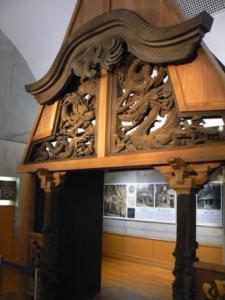
Ornamental Carving from Jozansou
Part of the Mitsui Family Villa, Jozansou is exhibited in the Entrance Hall.
Prologue : Nature’s Influence on Culture in Oiso
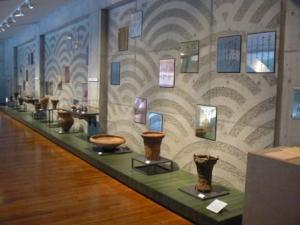
Nature and Culture in Harmony in Oiso
This shows how the scenery of Oiso has influenced the pottery, art, poetry and prose created here.
A : Ancient Life
A-1 : A Change of Vessels
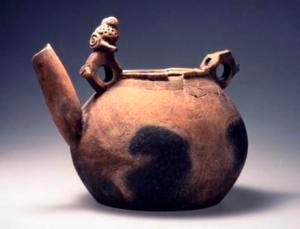
A relic found when building Oiso Elementary school, a type of pottery called spouted pottery.
Vessels have been used by people since ancient times. In Japan, Jomon pottery was made more than 10 thousand years ago. From Jomon pottery, the materials and techniques used were refined leading to Yayoi pottery, Haji pottery, Sue ware, other kinds of pottery, finally resulting in porcelain. You can see examples of these different styles in this section.
A-2 : Yokoanabo, Tunnel Tombs
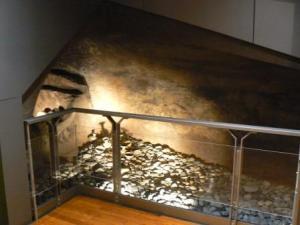
A Reconstruction of a Tunnel Tomb
The Tunnel Tombs of Oiso hills are one of the leading examples of their kind in Japan. In the late kofun period (around the 7th century), tunnel tombs were dug in the hillsides of Oiso. A reconstruction of a tunnel tomb can be seen in the Permanent Exhibition Room.
A-3 : Local Government Sagami Kokufu
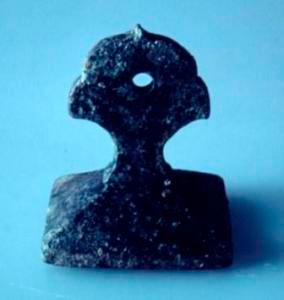
Banbadai Relic A Copper Stamp
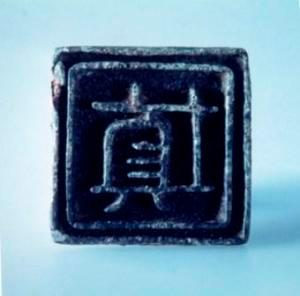
In the time of the Japanese ancient court, administrative divisions to rule regions were established. They were similar to prefectural governments now. Some generations later, it is said that Sagami Kokufu (the local government) moved from the south of Osumi County (present-day Hiratsuka City) to the south of Yuruki County (present-day Oiso Town). The Sagami Kokufu heritage continues in the name of Kokufu, an area of Oiso.
B : Workings of Nature
B-1 : Animals and Plants of Oiso Hills
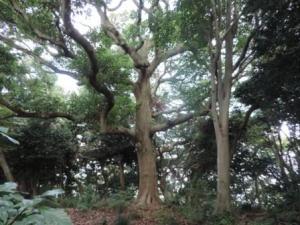
Machilus
In Oiso hills, we can see the green of trees throughout the year, because of the wide variety of ever-greens e.g. Machilus, Castanopsis. The rich green environment and the natural springs and streams in the hills ensure the wildlife of Oiso has and will continue to flourish.
B-2 : Creatures of Oiso Seashore

A Loggerhead Turtle
Many rare (in Japan) creatures live in Sagami bay, because of the Kuroshio Current. These are of interest to academics throughout Japan. In Oiso, a variety of creatures live mainly on the rocky area of Terugasaki Beach. In particular, the white-bellied green doves migration to Oiso in early summer to fall is a rare phenomenon, and as a result the bird has become the symbol of the town. Depending on the year, it is also possible to see loggerhead turtles laying eggs on the beach in Oiso.
C : Festivals / Spiritual Connections
C-1 : The Appearance of Prayer
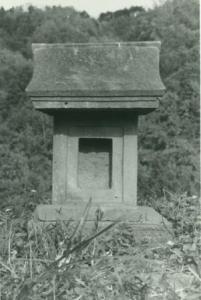
The God of Mountains
The nature of Sagami bay and Oiso hills gives us rich blessings, but often threatens our lives. Since ancient times people have thanked the sea and the mountains for their blessings. As time progressed the sea and mountains were worshipped and prayed to. The same trees, rocks and Sekibutsu (the gods made stone) continue to be worshipped now.
C-2 : The Festivals of Prayer for the Sea / The Festivals of Prayer for the Earth
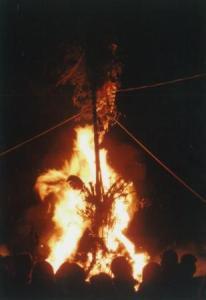
Sagicho
In Oiso, surrounded by Sagami bay and Oiso hills, many ancient festivals for the sea and the earth continue to the present day. This section introduces the festivals of Oiso, Sagicho, the festival of Shiraiwa shrine, Yama Mikoshi of Takaku shrine, Kounomachi, Mifunematsuri, and the Star Festival of Nishikoiso.
D : The Land of Longing
D-1 : Temples and Shrines in Oiso
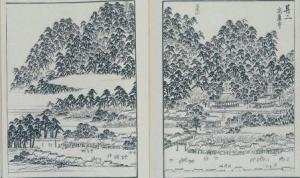
The Illustration of Kouraiji-temple (from “Souchuryuonkiryaku” kept by National Archives of Japan Naikakubunko)
In Oiso, there are temples and shrines which were established in ancient times. In particular, in the Kamakura period, Kouraiji-temple and Shinrakuji-temple were built, so Oiso as a city developed around the temples.
D-2 : Tokaido Oiso-juku
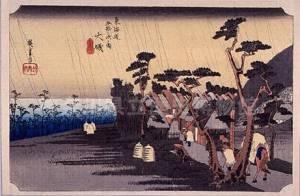
“Tokaido-gojusantsugi-no-uchi-Oiso” (one of 53 post stations in Tokaido, Oiso / kept by Oiso Municipal Museum)
Oiso-juku was the 8th post station town from Nihonbashi on the Tokaido in the Edo period. Oiso-juku was a small town, so Oiso and a neighboring village Higashikoiso worked together. This system was called Kashuku. There were three inns called Honjin (designated solely for use by daimyo or court nobles) at Oiso-juku. Oiso Municipal Museum has the archives of the one of Honjin, Kojima Honjin. This is a valuable collection for Oiso.
D-3 : Oiso Beach Resort
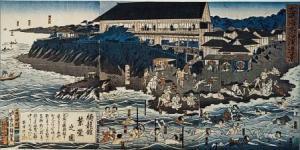
“Touryukan-hanei-no-zu” (a print of crowds at Toryukan / kept by Oiso Municipal Museum)
Oiso Beach Resort was established in 1885, by Jun Matsumoto, a high ranking army doctor. He recommended Oiso as beach resort. As Oiso Beach Resort grew, Oiso station opened along with hotels, for example Touryukan. By 1900 Oiso was a popular beach resort.
D-4: Literature in Oiso and Oiso in Literature
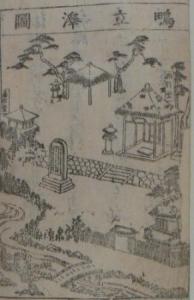
“Shigitatsusawa-zu” (the print of Shigitatsusawa / from “Sousyu-Oisoeki-nishishigitatsusawaki Kan”kept by Oiso Municipal Museum)
The beauty of the hills and the sea around Oiso has inspired artists and writers throughout history. An example of “Waka” (a Japanese short poem) is engraved on a stone tablet, it can be seen in the print above, to the left of the center. Tora-gozen, the mistress of Soga from Soga-monogatari, the tale of Soga, a famous story of revenge from the Kamakura, lived in Oiso. In the Edo period, Shigitatsuan, one of the three famous Haikaidojo in Japan, was established. Students would come to learn from the masters and practice their craft. Oiso was also a center for Haiku parties. After Oiso became famous, a lot of writers and artists moved to the town.
D-5 : Brick, the Symbol of Modern Times in Japan
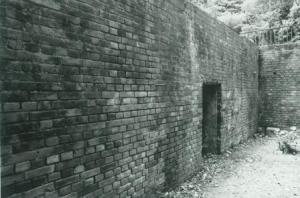
Red Brick Foundations for a Building
Brick came to Japan from the West and it is a symbolic material of modern times in Japan. In Oiso, brick was used to build western style villas, parts of houses and railway bridge columns.
D-6: Famous Oiso Residents
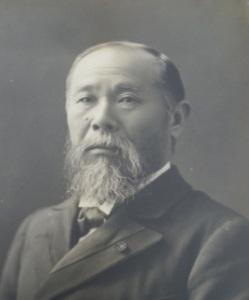
The Portrait of Hirobumi Ito (kept by Oiso Municipal Museum)
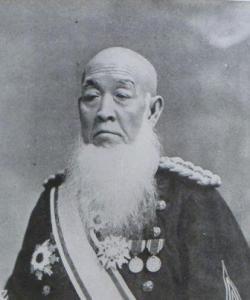
The Portrait of Jun Matsumoto (kept by Oiso Municipal Museum)
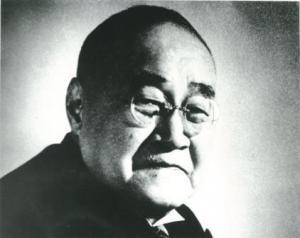
The Portrait of Shigeru Yoshida (kept by Oiso Municipal Museum)
Many famous people have lived in Oiso, in particular Hifobumi Ito, Jun Matsumoto, and Shigeru Yoshida. Their legacy continues to influence the town today. Displays in the Museum explain their lives.
D-7 : The Culture of Villas
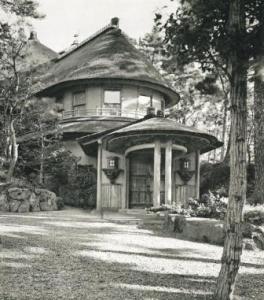
Jozansou (from “Shashinshu Jozansou”kept by Oiso Municipal Museum)
Oiso, surrounded by hills and the sea, is blessed with warm weather so it has been famous. For it’s area of holiday villas since the Meiji period. Unfortunately, we can’t visit any of the remaining villas from that time. The structure models of Jozansou, the Mitsui Family Villa at present-day prefectural Oiso Joyama park, and the models of Yanosuke Akaboshi Villa and Morinosuke Mitsui Villa are exhibited in the permanent exhibition room.
Epilogue : Visiting the Hills and Coastlines of Shonan
The story of the hills and the sea of Shonan always changes because of new discoveries by the museum. The epilogue section of the exhibition is used to introduce these discoveries.






























更新日:2017年03月01日